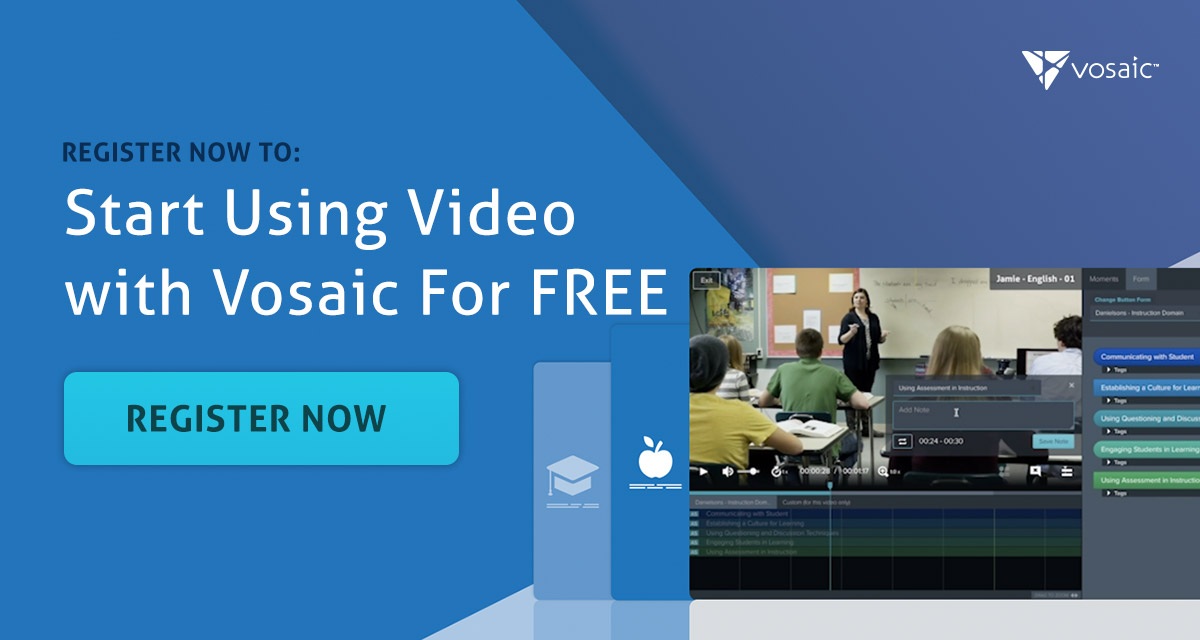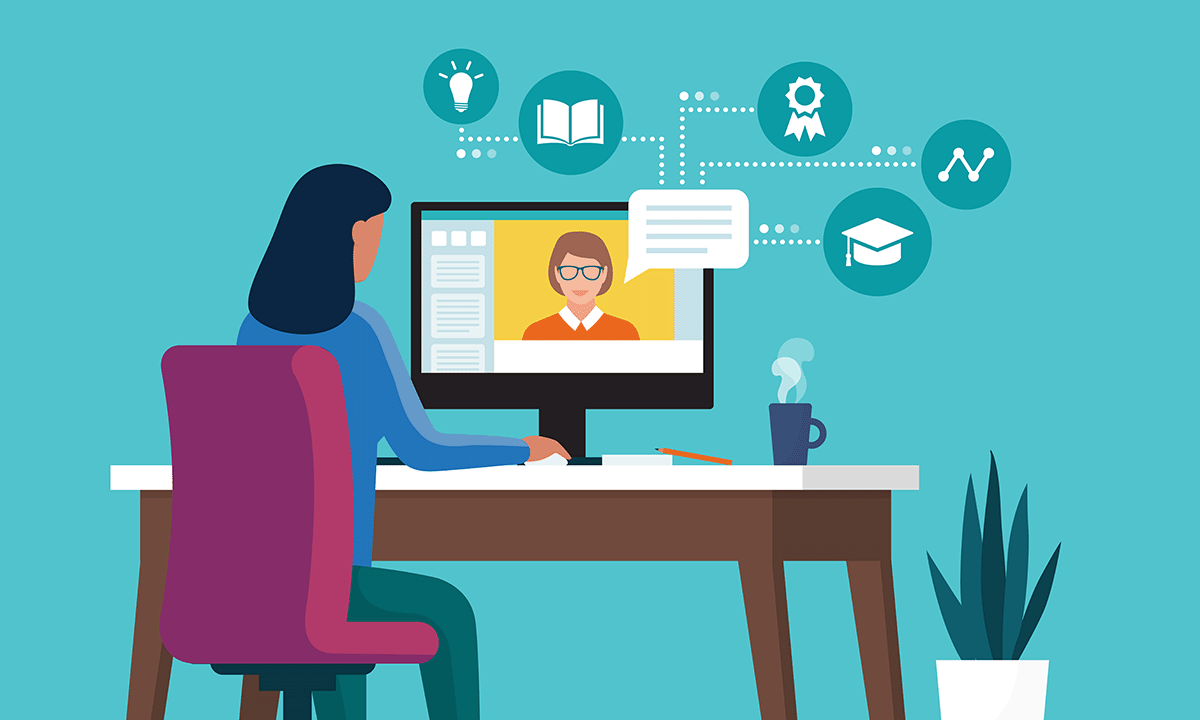The quality and effectiveness of education should be prioritized, and e-supervision enhances pre-service teachers' teaching and learning process by allowing supervision sessions to take place online. This flexibility gives future educators more learning opportunities to be effective in the classroom.
What is E-Supervision?
Professors commonly find it challenging to continuously support and develop their pre-service educators in person due to limited resources like time. Communication and growth can be difficult to achieve when geographically distant.
Most people are familiar with conducting and completing schoolwork online. In the past few years, technology has increasingly developed to sustain and support even more of these innovative methods of e-learning. Colleges and universities constantly adopt new information and communication technologies into current practices, including e-supervision.
E-supervision is the latest educational teaching technology, using email, video, and other online resources to enhance the teaching process for pre-service teachers. Most commonly, e-supervision includes video supervision at geographically distant sites, either synchronously or asynchronously, via a recorded video. E-supervision allows observers to give future educators continuous feedback while remote. This way of supervising presents many benefits to the education process for professors and their students.
The Benefits of E-Supervision
Since e-supervision takes place remotely, it poses many advantages for educators and pre-service teachers.
E-supervision technology costs are nullified by more effective learning, decreased travel time and costs, and flexible scheduling. Since no travel is necessary for e-supervision to occur, it helps reduce the time field supervisors need to visit schools allowing them to analyze a teacher’s practice via video. E-supervision also allows professors quick and continuous access to their student's information, which can improve communication practices.
If you don't have a Vosaic account for video-based feedback and student self-reflection, you can start with a free trial today.
Let’s dive more deeply into some of E-supervision's ongoing benefits.
Frequency: With the flexibility of e-supervision, professors can host more frequent interactions with their students, facilitating a more effective learning process. Through these frequent interactions, professors and pre-service teachers can develop positive and strong communication habits. This sets students up for success in the observation and coaching sessions that will take place in their future careers.
Communication: Administrators can share their observation notes, comments, and questions in an email immediately after the observation. This quick communication provides more time for the educator to reflect before discussing it with their administrator. Administrators and pre-service teachers can quickly communicate through a video observation platform like Vosaic. You can easily leave video or text comments corresponding to a specific moment on a timeline in the lesson taught, so everyone is on the same page about what is being corrected.
Time and Cost Effective: Administrators can schedule multiple supervisory sessions per day and save time with reduced travel. With the ability to supervise from home or in the office, the administrator can efficiently use their time when they are not directly supervising.
Implementing E-Supervision
Proper implementation of e-supervision will ensure the best possible outcomes.
Before implementing e-supervision, clear communication with students and administrators is essential for their understanding and adoption of the technology. Technology training prior to implementation is also necessary to ensure smooth and beneficial observations. Creating assignments that aid students in staying on track with sharing their videos for supervision are helpful. With Vosaic, assignment creation and video uploading/coding are available in the same application.
E-Supervision in Student Teaching
E-Supervision has been progressively adopted by higher education institutions for several reasons: a large number of students in higher ed institutions, the growing number of distant collaborations, and the more readily available use of technology.
Student teachers need to reflect and receive evidence-based feedback on their teaching practices. With e-supervision, students record and submit classroom videos for self-reflection, critique, and feedback. Recorded videos of the observation allow students to have multiple feedback points and adequately prepare for teaching after college
E-Supervision at Iowa State University
A semester-long study at Iowa State University examined student teachers’ perceptions of e-supervision. The study utilized a hybrid model that included four e-supervision observation visits and three traditional face-to-face visits.
Each student teacher was provided with a technology kit that included an iPad mini, 3-in-1 iPad lens, wireless microphone, tripod with mount, and carrying case. Student teachers then received instructions on how to set up the equipment and participated in a practice session with their faculty supervisor.
Each student teacher and faculty supervisor scheduled all sessions in a two-week window opposite to a face-to-face visit. Zoom was used to connect the faculty supervisor with the student teachers’ classroom for the observation and follow-up discussion, each lasting 60 minutes.
Students found that the hybrid model of e-supervision provided many beneficial components that enhanced their student teaching experience.
E-supervision allowed for more frequent contact with their faculty supervisor; a student teacher stated,
“when they were only coming three times they were going to give me a grade based off of the three times they saw me teach. But now, with e-supervision, I would feel more comfortable receiving a grade because they have seen me do more things and apply myself in different ways. [Student 07; Frequent Contact].”
Student teachers had the flexibility to schedule the observations and any follow-ups; one student teacher shared,
“I was placed over three hours from Iowa State, so coming here multiple times is a hassle for the drive time. Zoom for me was awesome because [University Supervisor] could watch a lesson, and then after school we would meet again and go back over it after school. [Student 02; Flex Scheduling].”
Student teachers found more opportunities to communicate often with their university supervisor; a student teacher noted,
“…I thought that the chat at the end that we always had, whether it was three minutes or fifteen, I thought that was really beneficial. So I think that was the most important part [Student 08; Pre/Post Communication].”
The study found no statistically significant difference between remote and face-to-face supervision on performance evaluation scores. The student teachers overall found the e-supervision process beneficial to their professional development.
Two Methods for Implementing E-Supervision
Synchronous e-supervision utilizes real-time communication in chat or video conferencing through a third-party platform. This method happens in real-time and sparks immediate contact between the professor and the student.
In asynchronous e-supervision, the professor and student do not receive an immediate reply. For example, a student may post a video recording of themselves teaching in the classroom, which the professor reviews, markups, and comments on at a later date. This method includes responses through email, discussion boards, forms, and Vosaic.
Vosaic is a video analysis platform for self-reflection and coaching for pre-service teachers. Students can record or upload videos from anywhere using their personal devices, professors can then mark essential moments on a video timeline and leave comments, either while observing or after the video is recorded. Students can react to the feedback, adjust their practice, and repeat the process as needed.
The likelihood of missing an important moment is high during in-person supervision sessions. Vosaic helps to replace what professors and students think happened with reality. Marking important and specific moments in a video facilitates a more detailed and beneficial reflection. Using Vosaic to perform e-supervision sessions can ensure that every moment is captured, making a more effective observation.




